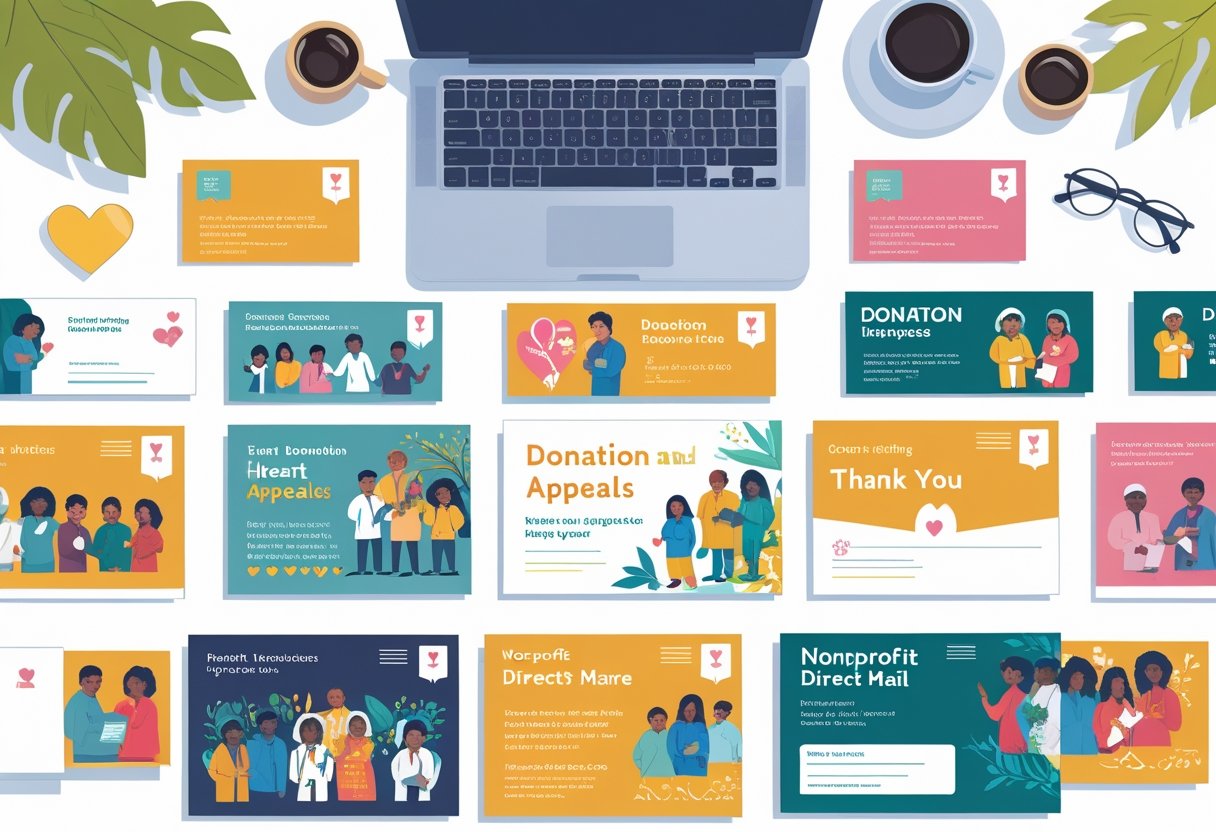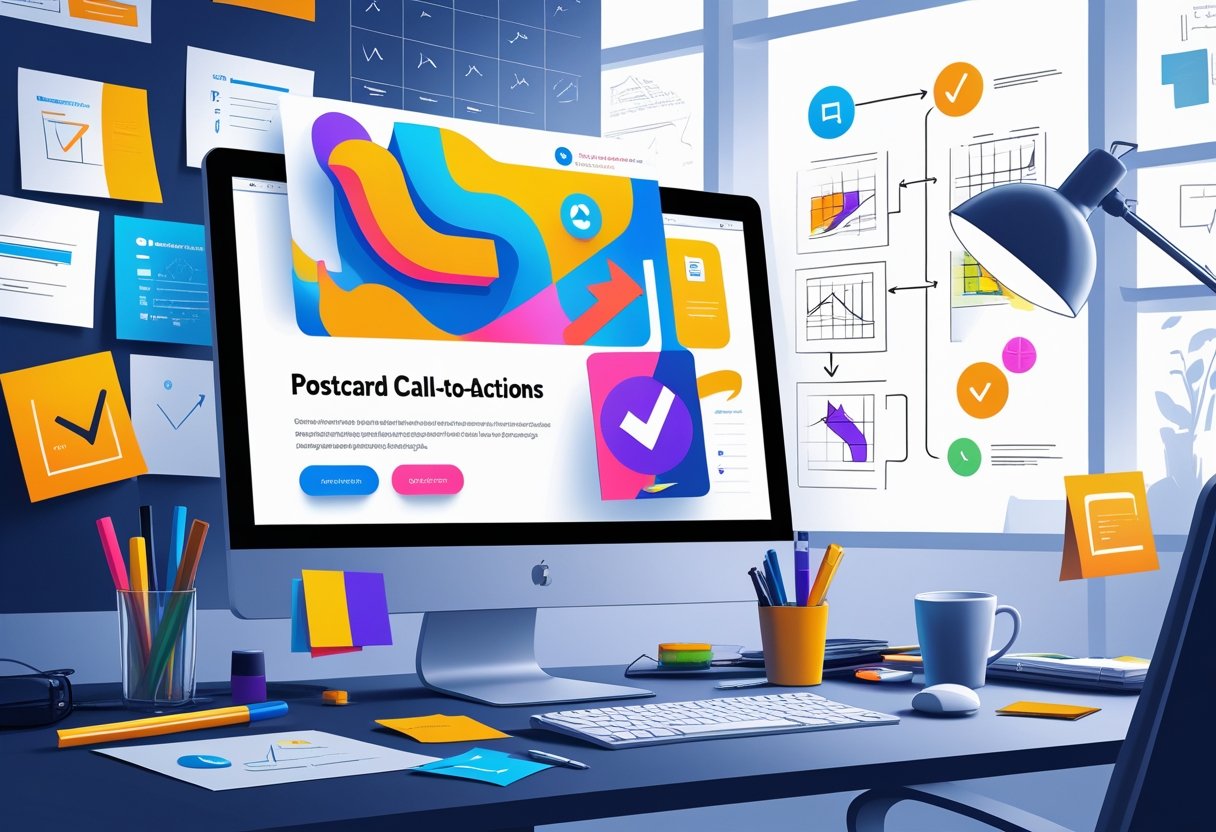Direct mail remains a powerful tool for nonprofits seeking to engage supporters and increase donations. With well-crafted campaigns, organizations can capture attention and drive action, ultimately making a significant impact. Exploring successful nonprofit direct mail examples can provide invaluable insights and inspiration for your own fundraising efforts.
Whether it’s through eye-catching designs, compelling storytelling, or targeted messaging, effective direct mail can transform your outreach strategy. You’ll learn about various approaches that have yielded positive responses and engagement from donors. By leveraging these examples, your nonprofit can enhance its communication and build stronger relationships with supporters.
At Mail Processing Associates, we specialize in Comprehensive Mailing and Printing Solutions, ensuring your direct mail campaigns are both effective and efficient. Our tailored services are designed to meet your unique needs, allowing you to focus on what matters most: your mission and your donors.
What Is Nonprofit Direct Mail?
Nonprofit direct mail is a targeted fundraising strategy that involves sending physical materials to potential donors. This method allows nonprofits to engage supporters with personalized appeals, making it an effective tool for driving donations and building lasting relationships.
How Direct Mail Supports Nonprofit Fundraising
Direct mail provides a tangible way for nonprofits to reach their audience. Through carefully crafted messages, it allows you to share your mission, successes, and ongoing needs directly with supporters.
Including compelling stories, impactful visuals, and clear calls to action can motivate recipients to contribute. Including a QR code or easy-to-follow instructions for online donations streamlines the process, making it convenient for donors to give.
Effective use of direct mail not only raises funds but also enhances donor engagement. When your message resonates, it fosters goodwill and encourages repeat support.
Major Differences from For-Profit Direct Mail
Nonprofit direct mail differs significantly from for-profit strategies in several ways. While for-profit organizations focus primarily on sales, nonprofits emphasize building relationships and trust with potential donors.
The messaging often involves storytelling that highlights the impact of donations rather than promoting products. For nonprofits, emotional appeals can help convey urgency or importance, driving supporters to act.
Furthermore, direct mail for nonprofits tends to cultivate a sense of community. It nurtures connections with the audience while encouraging them to participate in the mission.
For tailored solutions, consider partnering with Mail Processing Associates. As experts in comprehensive mailing solutions, we help nonprofits successfully navigate their direct mail fundraising efforts.
Elements of Effective Nonprofit Direct Mail
Effective nonprofit direct mail campaigns are marked by a blend of thoughtful design, impactful storytelling, and strategic engagement techniques. Focusing on these elements can significantly enhance your chances of connecting with donors.
Compelling Design Choices
Strong design is crucial in capturing attention. Use vibrant colors and appealing graphics that align with your nonprofit’s mission. Keep your layout clean and uncluttered, guiding the reader’s eye to key information.
Consider these design tips:
- Visual Hierarchy: Use headings, subheadings, and bullet points for easy navigation.
- Consistent Branding: Ensure your logo and colors are present, fostering recognition.
- Imagery: Integrate high-quality images that evoke emotion and resonate with your cause.
A well-designed piece by Mail Processing Associates can elevate your message and make a lasting impression on potential donors.
Powerful Storytelling Techniques
Storytelling creates an emotional connection, making the appeal more relatable. Share compelling narratives that highlight real-life impact.
Include personal anecdotes, testimonials, or success stories that illustrate your mission.
Key components of effective storytelling:
- Character Development: Introduce individuals who benefit from your organization.
- Conflict and Resolution: Present challenges faced and how your nonprofit provides solutions.
- Clear Messaging: Ensure your story aligns with the values and goals of your readers.
A powerful story motivates action, encouraging donors to support your cause through meaningful contributions.
Creating a Sense of Urgency
Instilling a sense of urgency compels donors to act quickly. Use phrases like "limited time offer" or "donate by [date] for a matching gift opportunity."
To enhance urgency, consider the following:
- Specific Goals: Outline what you need to achieve and a deadline for donations.
- Descriptive Language: Use engaging terms that highlight the immediacy of your needs.
- Visual Indicators: Incorporate countdowns or progress bars to show how you are tracking towards a goal.
When donors recognize the importance of timing, they are more likely to take action promptly.
Strategic Calls-to-Action
Your call-to-action (CTA) drives donor engagement. Make it clear what you want readers to do—donate, share, or participate.
Effective CTAs should:
- Be Clear and Direct: Use simple language that leaves no room for confusion.
- Suggest a Donation Amount: Provide suggested donation levels, indicating the impact of each.
- Repeat the CTA: Position it at both the beginning and end of your mail piece for emphasis.
A well-structured call-to-action encourages immediate responses and maximizes the effectiveness of your campaign. Working with Mail Processing Associates ensures you have all the tools you need for impactful direct mail fundraising.
Examples of Successful Nonprofit Direct Mail Campaigns
Direct mail remains a powerful tool for nonprofits aiming to engage with donors and drive fundraising efforts. Various strategies can lead to successful campaigns, and understanding these can help you craft effective materials that yield results.
Case Studies from Leading Nonprofits
One notable example is a campaign by an animal shelter, which utilized a compelling narrative to appeal to potential donors. They highlighted specific animals needing sponsorship, creating a personal connection. The shelter included photographs, emotional testimonials, and clear calls to action. This approach resulted in a significant increase in donations.
Another effective campaign came from a nonprofit focused on housing development. Their direct mail included success stories, showcasing families who benefited from their work. By presenting tangible results, this campaign fostered trust and encouraged repeat donations, ultimately increasing their fundraising success.
Direct Mail Letter Sample Analysis
An effective direct mail letter typically opens with a strong hook—something that captures attention immediately. For instance, starting with a powerful statistic or a poignant story can draw the reader in.
The body should focus on brevity while providing essential details. Using bullet points can help highlight key accomplishments and future projects. A clear and compelling call-to-action at the end should guide your reader on how to contribute or get involved.
Personalization is also crucial; using the donor’s name in the greeting can create familiarity and warmth, enhancing engagement.
Sample Postcards, Brochures, and Newsletters
Postcards are an excellent medium for quick updates or reminders about upcoming events. They should have a bold design that incorporates eye-catching visuals and a clear message.
Brochures can dive deeper into your mission, programs, and impact. Include infographics or charts to present data visually, making it easier for donors to understand the benefits of their contributions.
Newsletters serve to maintain ongoing communication with your supporters. Regular updates about your nonprofit’s activities, success stories, and donor acknowledgments keep your audience engaged. Highlighting specific campaigns within these newsletters can lead to increased participation.
For your direct mail needs, consider partnering with Mail Processing Associates. Their expertise in comprehensive mailing and printing solutions will help ensure your campaigns are effective and impactful.
Production, Mailing, and Compliance Considerations
Effective production, mailing, and compliance are crucial for the success of your nonprofit direct mail campaigns. Understanding the complexities involved ensures that your materials are not only appealing but also processed correctly by the USPS and reach your audience efficiently.
Working with Printers and Production Partners
When choosing a printer, consider their experience with nonprofit direct mail. Look for reputable partners who can deliver high-quality printing while adhering to your timeline and budget.
Select printers who offer services like variable data printing, which personalizes your mailings for greater impact. Additionally, inquire about bulk discounts and postal optimization to further reduce costs.
Mail Processing Associates specializes in comprehensive mailing and printing solutions, ensuring your project meets professional standards. Their expertise simplifies the often complex printing process, making it easier for you to focus on your campaign objectives.
Addressing USPS Requirements
To ensure compliance with USPS regulations, familiarize yourself with the specifications for size, weight, and format. Using the correct standards helps avoid delays or additional fees during mailing.
Make sure your mailings include proper addressing formats and barcodes. Employing live stamps or indicia can also determine how your materials are processed by the USPS.
Staying compliant protects your nonprofit status and ensures your message reaches its intended recipients without unnecessary complications. Following all USPS guidelines is essential for a successful campaign.
Managing Mailing Lists for Maximum Reach
Your mailing list is one of the most critical elements of a direct mail campaign. Regularly update your list to remove outdated addresses and ensure accuracy, improving delivery rates and engagement.
Segment your list based on donor behavior or demographics to tailor your messaging effectively. This targeted approach can significantly enhance your campaign's impact by tailoring the ask to the specific audience.
Using tools and services to manage your list can streamline this process. Mail Processing Associates offers support in optimizing your mailing lists, maximizing your outreach efforts while ensuring that your communications resonate with the right audience.
Integrating Direct Mail with Digital Fundraising
Combining direct mail with digital marketing strategies can enhance your fundraising efforts. By leveraging the strengths of both channels, you can increase engagement and drive more donations from your audience.
Blending Direct Mail with Email Marketing
Email marketing serves as a powerful complement to your direct mail campaigns. When you send a mailer, follow up with an email campaign to reinforce your message. Include a call-to-action in both formats directing supporters to your website or donation page.
Consider using QR codes in your direct mail pieces to streamline the transition to digital. This allows recipients to quickly access more information and complete their donations online. Success often hinges on maintaining consistent branding and messaging across both channels for a cohesive experience.
Measuring Results Across Marketing Channels
To maximize your fundraising efforts, it's essential to analyze results from both direct mail and email marketing. Track key performance indicators (KPIs) such as response rates, donation amounts, and engagement levels.
Utilize tools to measure the effectiveness of each channel. Gather data to identify which messages resonate best with your audience. This can include A/B testing subject lines for emails or varying the format of your direct mail.
By integrating these channels, you can employ more precise strategies for future campaigns. Investing in resources like Mail Processing Associates optimizes your mailing and printing processes, ensuring effective, tailored communication that supports your fundraising goals.
Frequently Asked Questions
Understanding the nuances of nonprofit direct mail campaigns can enhance your outreach efforts. The following sections address essential strategies, measurement techniques, cost considerations, engagement methods, frequency of sending, and content creation tips.
What are some effective strategies for nonprofit direct mail campaigns?
Targeting a specific audience is crucial. Use data analytics to identify potential donors based on past behaviors and demographics. Personalized messages can significantly increase open rates and responses.
Engaging design is another key component. Your materials should be visually appealing and reflect your organization’s branding while including clear calls to action.
How can nonprofits measure the success of direct mail initiatives?
Utilize response metrics such as return on investment (ROI), conversion rates, and engagement levels. Tracking the number of donations and the average gift size will provide insight into campaign performance.
Post-campaign surveys can also help gauge donor sentiment and areas for improvement. These insights can guide future efforts and adjustments.
What are the cost considerations for implementing a nonprofit direct mail program?
Costs can vary based on factors like volume, format, and distribution method. Consider printing, mailing, and design expenses when budgeting.
You should also factor in potential ROI. A well-executed campaign can result in significantly higher donations compared to initial costs, making proper planning essential.
Which direct mail techniques tend to yield higher donor engagement for nonprofits?
Personalization is key. Tailoring messages to individual recipients can lead to a higher engagement rate. Techniques like including handwritten notes or tailored envelopes can make a difference.
Incorporating storytelling about your nonprofit's impact can create an emotional connection. This can motivate donors to engage more deeply with your cause.
How frequently should a nonprofit send out direct mail to potential donors?
Frequency should be determined based on your donor base and previous engagement levels. Sending mail too often may lead to donor fatigue, while too infrequent communication can result in reduced visibility.
A balanced approach, perhaps quarterly or bi-monthly, is often effective for maintaining relationships and keeping your cause top of mind.
Can you provide tips on crafting compelling content for nonprofit direct mail?
Start with a strong headline that captures attention. Your opening should immediately engage the reader and convey urgency or importance.
Use clear, concise language and compelling stories to illustrate your mission. Highlight the direct impact of donations to motivate action. Include a well-defined call to action to guide the reader on the next steps.
For a comprehensive mailing and printing solution focused on your unique needs, look to Mail Processing Associates. Our expertise ensures that your campaigns are effective and well-executed.












